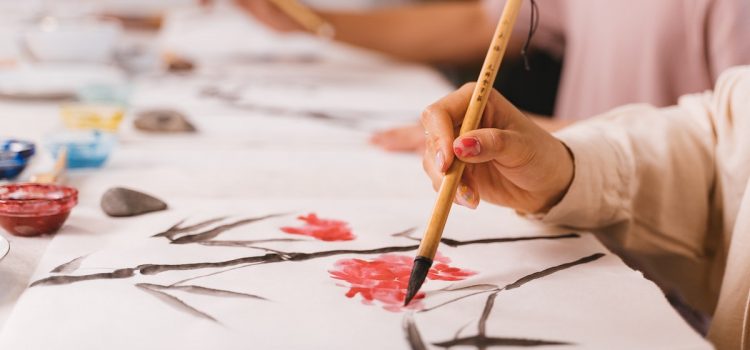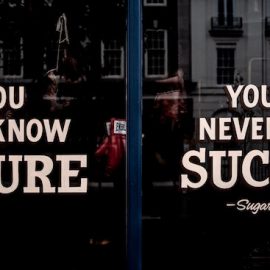

This article is an excerpt from the Shortform book guide to "Mastery" by Robert Greene. Shortform has the world's best summaries and analyses of books you should be reading.
Like this article? Sign up for a free trial here .
What’s the best way to learn a skill? How do you get momentum? What role do others play?
Mastering a skill is a key component of mastering a discipline. In the book Mastery, Robert Greene argues that the best way to develop a skill is through hands-on learning. He provides three recommendations for practicing in this way.
Keep reading for Greene’s advice on how to master a skill.
How to Master a Skill
Every field has its skills, and you’ll need technical proficiency to achieve mastery. Greene recommends starting with one skill that underpins others in your field. For example, an aspiring novelist could learn to brainstorm and organize her thoughts before trying more complex aspects of creative writing.
(Shortform note: In The Art of Learning, chess and tai chi champion Josh Waitzkin recommends studying the elements of your skill one at a time, and then putting them together. This way, you first grasp the simplest aspects of the skill. Then, you learn to navigate more complex uses of the skill. For instance, a pole vaulter should learn how to hold the pole, how to run with it, and how to plant it in the box, all before attempting to vault.)
What’s Greene’s advice on how to master a skill? He believes that hands-on learning is the best way. Here’s how he recommends practicing:
- Imitate a master: Find someone who’s mastered a skill and observe them. Imitate their actions, and repeat until you’ve grasped each aspect of the skill.
- Push through tedium: Practice is often tiresome, but pushing through tedium helps you mature. By showing up every day, you’ll develop the patience and humility to become good at anything.
- Build momentum: As you practice, you’ll get better. As you get better, you’ll come to enjoy practice. As you come to enjoy practice, you’ll want to practice more. This “flywheel” cycles around, giving momentum to your skill-building.
As you practice, your brain develops to handle the skills you’re building. With time and repetition, they’ll become second nature.
| How to Practice Greene emphasizes the value of hands-on learning, but he stops short of explaining how to practice effectively. In The Art of Learning, Josh Waitzkin offers several specific techniques: Analyze your mistakes—When you slip up, note what went wrong and reflect on it until you understand the mistake. Then, practice the correct technique. Update your habits—In any skill, we settle into habitual responses. Regularly examine your default choices and cull any that no longer work well. Slow it down—In developing a physical skill, moving slowly teaches your body smooth, effective form. Speed up only once you’ve refined a technique in slow-mo. Greene also writes that practicing at least 10,000 hours guarantees mastery of any skill, citing the “10,000-hour rule” from Malcolm Gladwell’s Outliers. However, Gladwell likely misrepresented that research: K. Anders Ericsson, the psychologist upon whose work Gladwell based his number, explains that Gladwell took the average practice time of a group of elite violinists (around 10,000) hours, generalized it to all fields without evidence, and called it a “magic number” for success. Given this, focus instead on learning to love the practice, and don’t worry about the end goal—the journey is the point. |
| The Dreyfus Model of Skill Acquisition Greene’s description of the three stages of mastery is a model of skill development—that is, it describes how to go from novice to mastery in a given field. There are many such models; a notable example is the Dreyfus model of skill acquisition, which describes five stages of skill progression: Novice → Advanced beginner → Competent → Proficient → Expert. Unlike Greene, Dreyfus doesn’t emphasize the social dimensions of mastery. Instead, he describes in detail how to develop technical skill. For example, Dreyfus’s “novice” and “advanced beginner” stages focus on grueling repetition of basic principles, such as how to dribble a basketball, without concern for social know-how. Similarly to Greene, Dreyfus argues that at the highest level, experts comprehensively and intuitively grasp their skills. For example, a master chess player can recognize thousands of subtle variations on a chess position, each of which calls for a different response. Much the same, fluent speakers of a language can discriminate between minute differences in expression of everything from word choice to tone of voice and speed of speech. |

———End of Preview———
Like what you just read? Read the rest of the world's best book summary and analysis of Robert Greene's "Mastery" at Shortform .
Here's what you'll find in our full Mastery summary :
- The clear path anyone can follow to achieve mastery
- An explanation of the three stages of mastery
- How learned conventions and familiar ways of thinking reduce creativity






